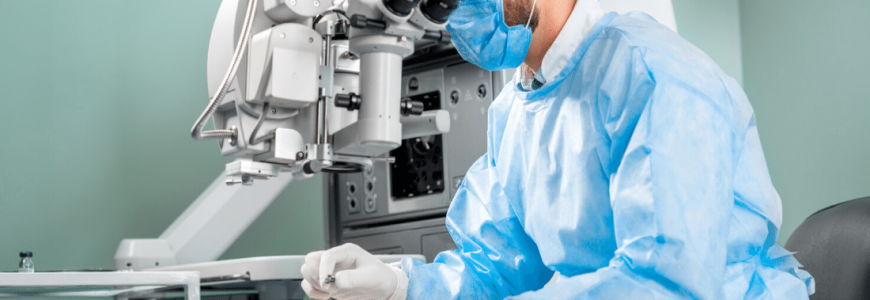Pre-operative consideration
The tube surgery will certainly require a general anaesthetic, for the following reasons:
- Muscles exist that insert onto the surface of the eye which aid us looking up, down, left and right
- The tube plate is implanted on the surface of the eye (directly on the sclera) at the top and side of the eye (away from the nose side)
- This is in the space between the lateral rectus and superior muscles
- If the plate is sutured on top of these muscles, symptoms of double vision will be noted: hence we ensure the muscles are moved out of the way
- Any time the muscles are manipulated, a reflex called the oculo-cardiac reflex is stimulated.
- This is managed under the care of an experienced Anaesthetist whilst the patient is under GA
- Furthermore, the surgery usually lasts just over an hour: hence a general anaesthetic is more comfortable for the patient
Other considerations to account for:
- Where-ever safe, it is preferable to stop any blood thinners for a few days prior to surgery. It is extremely important to work as a team to facilitate this.
- Where-ever possible, it is important to prepare the ocular surface to receive the intervention. If safe to do so, glaucoma drops can be discontinued and oral tablets may be given.
Post-operative care
As with all glaucoma surgery, the success of the procedure is determined in part on the day of surgery and in part what happens afterwards. It is a team effort between the surgical team and the patient: the post-operative care is crucial for success. Some general rules include:
- Stop drops in the operated eye and any oral pressure reducing medication
- If these are continued the pressure can drop too low
- A pressure too low can crinkle the back of the eye and hence reduce the vision
- Hence it is imperative to stop the pre-operative drops in the operated eye only
- Equally, it is important to continue to use the drops in the non-operated eye as before the surgery
- The operation only has an impact on the eye operated on
- Refrain from heavy lifting for the first few weeks
- The surgery is performed using very fine sutures, often smaller than the diameter of a human hair
- Any increase in pressure in the abdominal area (Valsalva affect), will be transmitted to the eye
- This can potentially loosen stitches and make any wounds gape
- Shield
- The purpose of the shield is not to prevent an infection
- Hence it is not necessary to use during the day
- Rather it is a mechanical barrier to prevent inadvertent damage by rubbing the eye at night
- Hence it is sensible to use the clear plastic shield overnight for the first week or so
- Topical steroids and antibiotic drops
- Any insult to the body, stimulates a response to act as a defence mechanism
- I.e. a laceration will initiate a coagulative response to close the wound quickly
- However this is contra-productive in the world of glaucoma surgery
- This pro-inflammatory milieu is controlled and inhibited by steroids
- Any conjunctival surgery should have preservative free medications to prevent the environment from being over hostile and facilitate surgical success
- Chloramphenicol is an antibiotic to minimise risk of infection
- Driving
- This is patient dependent, particularly with respect to the contra-lateral eye
- Showering and swimming:
- Avoid water getting in the eye:
- Ideally avoid swimming for one month
- Eventually, use goggles and where possible avoid submersing the head fully into the pool
- When showering, try to tilt the head back and use the faucet to wash the hair (sensible to avoid hair washing for the first week or so)
- Avoid water getting in the eye:
- Contact lens wear
- It is sensible due to risks of infections and damaging the surgical interventions, to stop using CL and use spectacles
- Flying
- Aside from gas in the eye which is expansile, ophthalmic surgery in the peri-operative period is safe
- However, the post-surgical period requires intense follow-up:
- Typically, weekly visits for at least one month
- Hence no flying too far away!
- Avoid rubbing the eye once the glaucoma drainage device has been implanted.
Risks
As with all surgical interventions, risks do exist and it is important to consider them carefully prior to any decisions about proceeding. Fully weighing up the risks and benefits of surgery is a key.
This blog is contributed by Gurjeet Jutley.
November 2020

